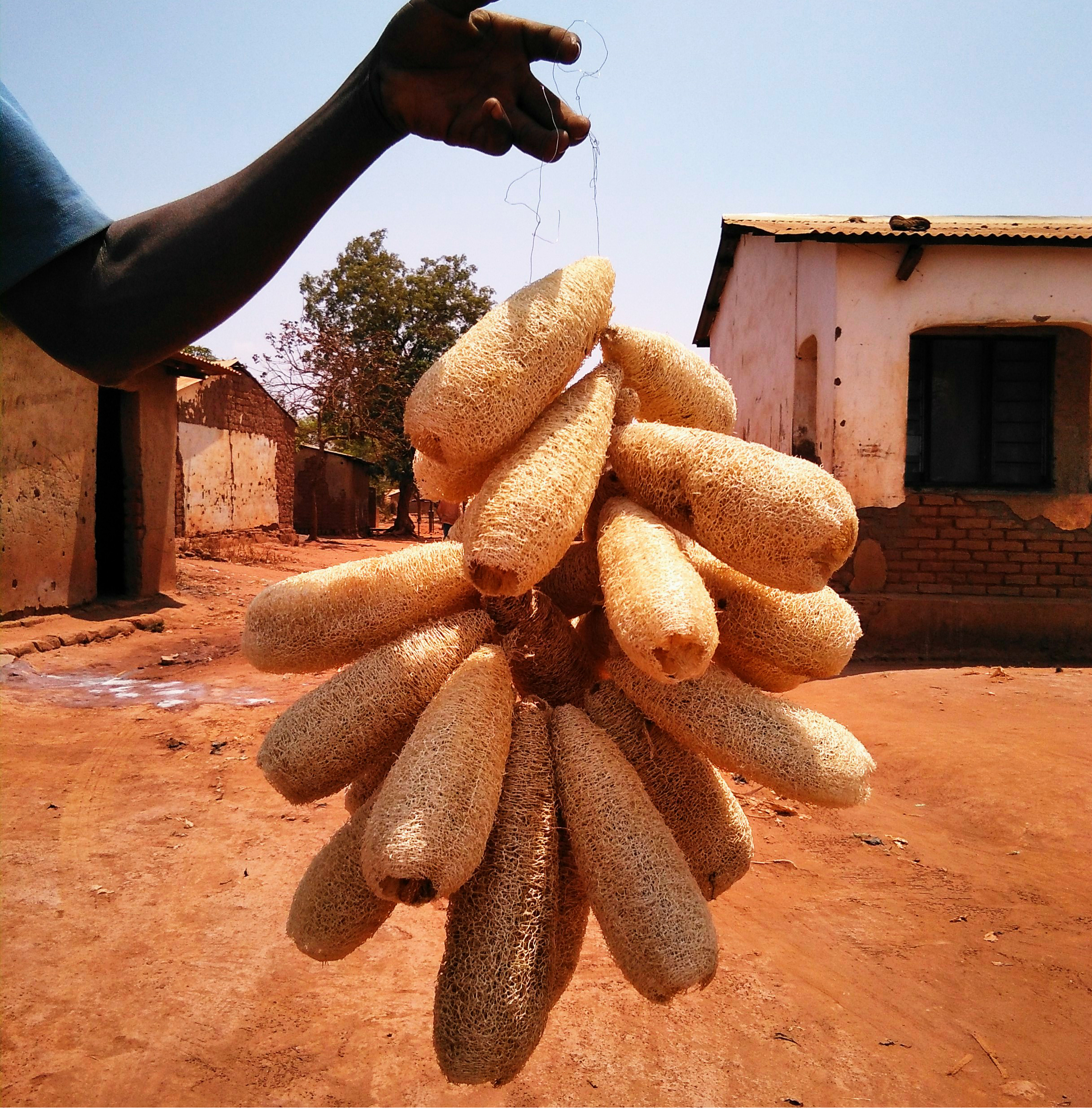While strolling through the streets of Mtandile, one of the unplanned settlements in the periphery of Lilongwe (Malawi), I bumped into Atu. A young boy who spends his days walking up and down the neighborhood selling bath sponges made of the fruit of a local tree. To me this photograph showing the local bathing sponges against the rough landscape of the neighborhood represents one of the main findings of our research, the centrality that hygiene has to the Mtandile people’s lives.
In Mtandile diarrhea and other health problems associated to waterborne and water related diseases are frequent. As in many other low income settlements, the lack of sanitation infrastructure, the difficulties to access good quality water, and the affordability of hygiene products as soap or sanitary pads constrain hygiene practices, and increase the health risk profile of residents. Yet a number of locally embedded sanitation and hygiene routines are practiced with diligence (Rusca, Alda-Vidal, Hordijk, & Kraal, 2017).
As our research shows, residents have clear priorities, preferences, and motivations when it comes to practicing hygiene. As hygiene has multiple meanings for people, practices might often not be motivated by the wish to prevent diseases. They are shaped as much by the interest to portray a self-image, the joy from feeling clean, the fear of not being accepted or by local taboos and beliefs as they might be by knowledge about infections. Yet they contribute to protect people’s health. Researching locally embedded hygiene routines and knowledges can help us to identify what practices are those and to find ways to developing the conditions for them to be boosted and expanded.
Investigating locally embedded hygiene practices and knowledges might be a difficult task as they often have strong intimate, moral, routinized and taken for granted dimensions. Yet, visual methods can help to circumvent those. Photographs taken by research participants or by the researcher can help to document the embodied and performative dimensions of the practices and as prompt to open up deeper and more relaxed conversations.
References:
Rusca M., Alda Vidal C., Hordijk M., Kral N., Bathing without water, and other stories of everyday hygiene practices and risk perception in urban low-income areas: the case of Lilongwe, Malawi, Environment and Urbanization, doi: 1177/0956247817700291

Commentary on Rachel Tanur's Works: Guatemalan Clothesline